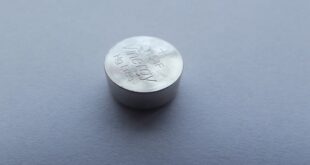THE adhesive stamp’s history dates back to early 19th century Britain, but the traditional stamp as we know it has changed with the introduction of barcodes and with 200 days left to use up old stamps, not everyone is on board.
Way back in…?
May 1840 saw the birth of the first adhesive stamp in Britain, the Penny Black. The little black stamp features a profile of Queen Victoria. It also features fine border work, with the price, “One Penny”, printed on the bottom and one in mint condition is the holy grail for stamp collectors. From its release on, British stamps were printed with the reining sovereign in a practice that continues to this day.
Prior to this?
Receiving letters was a rather complicated process as it involved the recipient paying postage upon delivery, finding themselves charged by the sheet and the distance travelled. As a result, only the very wealthy tended to use the post.
Things changed?
As the first sticky stamps in the world, the Penny Black’s arrival sparked a mail revolution. The number of letters sent in the first year more than doubled from 76 million to 168 million. Within a decade, this rose to nearly 350 million letters and by 1860, postage stamps were in use in 90 countries.
Now?
A digital barcode has now been placed next to the stamp in changes that were announced in February. Royal Mail said at the time: “We’re adding barcodes to all our regular ‘everyday’ stamps. These are the stamps that will be very familiar to you. They feature the profile of Her Majesty the Queen on a plain coloured background. The barcodes will enable exciting new services by connecting physical stamps to the digital world through the Royal Mail app.”
Services such as?
The barcoded stamps have a “digital twin” linked by the Royal Mail app and can allow users to track their mail and access items such as videos. For example, customers have been able to access a clip of British animated series, Shaun the Sheep, by accessing their barcodes this year. Royal Mail say the stamps also provide “additional security features and open the door to innovative services”.
However?
With 200 days to go until any non-barcoded stamps become invalid, the new arrivals are not popular with all. Dinah Johnson, founder of the Handwritten Letter Appreciation Society, told Canadian radio last week: “I feel a bit affronted about my letter being tracked, because there’s something so pure and simple about letter writing and then the digital world has been kind of forced on it.”
And?
She has been rebelling, in her own quiet way, by placing customised stickers with a postbox design featuring her organisation’s Twitter name over the barcodes of letters she receives so she doesn’t have to look at them, describing it as a “mini private protest”.
Meanwhile?
Royal Mail say that “if you won’t be able to use all of your stamps before February 1 you can swap them out for new barcoded ones.” Meanwhile, ‘special stamps’ with pictures on and Christmas stamps without a barcode continue to be valid and do not need to be swapped out.
Swapped out?
Non-barcoded stamps can be exchanged for the new barcoded version through the ‘Stamp Swap Out scheme’. ‘Swap Out’ forms can be printed out on the Royal Mail website or from Customer Service Points at local delivery offices.



